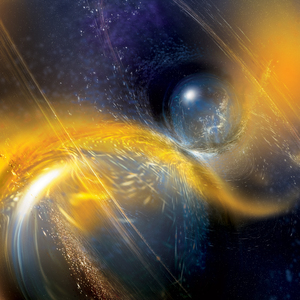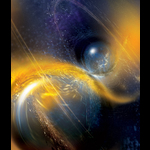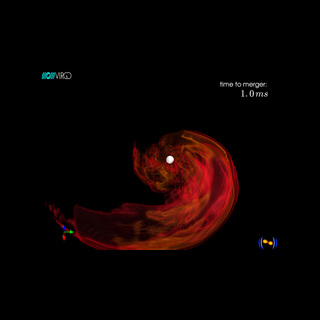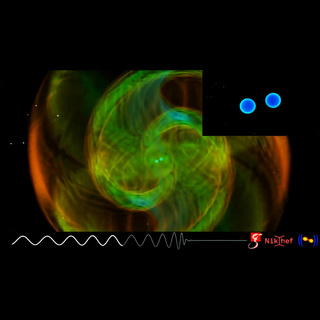GW190425 Simulation
This video shows a simulation of a binary neutron star merger consistent with the source of the GW190425 signal detected by the LIGO-Virgo global network of gravitational-wave detectors on April 25th, 2019. The two neutron stars have masses 1.75 and 1.55 times the mass of the Sun, and are initially at an orbital separation of 45 km. The video is made up of two parts, both showing the last few orbits of the neutron stars, their collision, and finally the prompt collapse of the remnant into a black hole. The first part focuses on the dynamics of the neutron star matter in the strong gravitational-field central region; the highest mass-density (blue) is above nuclear densities, while the white surfaces appearing later approximate the black hole horizon. The inset at bottom shows how the signal changed in amplitude and frequency over time (the ‘gravitational wave strain’) as sensed by the Livingston detector.
The second part, a zoomed-out version of the same simulation, shows the propagation of the emitted gravitational waves far from the source. The color-coding indicates the curvature of space-time in the orbital plane. Credits: CoRe collaboration www.computational-relativity.org / Jena FSU.
- Date
- January 6, 2020
- Location
- LIGO Lab
- ID
- ligo20200106v1
- Type
- Simulation
- Credit
- CoRe collaboration www.computational-relativity.org / Jena FSU







